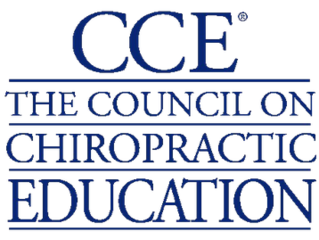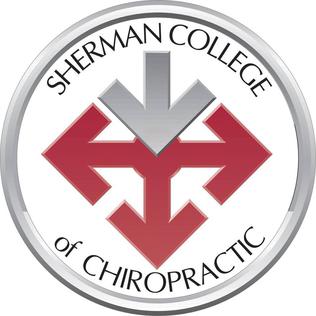
Chiropractic is a pseudoscientific complementary and alternative medicine (CAM) that is concerned with the diagnosis and treatment of mechanical disorders of the musculoskeletal system, especially the spine. Chiropractors, especially those in the field's early history, have proposed that such disorders affect general health via the nervous system. The main chiropractic treatment technique involves manual therapy, especially manipulation of the spine, other joints, and soft tissues, but may also include exercises and health and lifestyle counseling. Chiropractors are not physicians or medical doctors.

In chiropractic, a vertebral subluxation means pressure on nerves, abnormal functions creating a lesion in some portion of the body, either in its action, or makeup, not necessarily visible on X-rays.
The American Chiropractic Association (ACA), based in Arlington, VA, represents doctors of chiropractic. Its mission is to inspire and empower its members to elevate the health and wellness of their communities.
The National Association for Chiropractic Medicine (NACM) was a minority chiropractic association founded in 1984 that described itself as a "consumer advocacy association of chiropractors". It openly rejected some of the more controversial aspects of chiropractic, including a basic concept of chiropractic, vertebral subluxations as the cause of all diseases. It also sought to "reform the chiropractic profession away from a philosophical scope of practice and towards an applied science scope of practice." It stated that it was "dedicated to bringing the scientific based practice of chiropractic into mainstream medicine" and that its members "confine their scope of practice to scientific parameters and seek to make legitimate the utilization of professional manipulative procedures in mainstream health care delivery." "While the NACM is focused on furthering the profession, its primary focus is on the rights and safety of the consumers." The NACM was the object of much controversy and criticism from the rest of the profession. It quietly dropped out of sight and its demise apparently occurred sometime between May 30, 2008 and March 6, 2010.
Southern California University of Health Sciences (SCUHS) is a private university located in Whittier, California and specializing in the health sciences. Academics are organized into four colleges and schools: the Los Angeles College of Chiropractic, the College of Eastern Medicine, the College of Science & Integrative Health, and the School of Professional Studies. The university is accredited by the WASC Senior College and University Commission.

The National Board of Chiropractic Examiners (NBCE) is a non-profit national and international testing organization for the chiropractic profession that develops, administers, analyzes, scores, and reports results from various examinations. Examinations are offered to students at chiropractic colleges accredited by the Council on Chiropractic Education (CCE). The NBCE maintains its headquarters in Greeley, Colorado. The organization was established in 1963 to standardize chiropractic testing requirements as opposed to each state having its own board exam. Since 1963, all but one of states have adopted the passage of Parts I-IV; however, each state has its own licensing requirements in addition to the NBCE exams.

The Council on Chiropractic Education (CCE) is an American agency recognized by the United States Department of Education for accreditation of programs and institutions offering the Doctor of Chiropractic degree. The CCE seeks to ensure the quality of chiropractic education in the United States by means of accreditation, educational improvement, and public information. The CCE develops accreditation criteria to assess how effectively programs or institutions plan, implement, and evaluate their mission and goals, program objectives, inputs, resources, and outcomes of their chiropractic programs. The CCE is also recognized by the Council for Higher Education Accreditation (CHEA) and is a member of the Association of Specialized and Professional Accreditors (ASPA).

The history of chiropractic began in 1895 when Daniel David Palmer of Iowa performed the first chiropractic adjustment on a partially deaf janitor, Harvey Lillard. While Lillard was working without his shirt on in Palmer's office, Lillard bent over to empty the trash can. Palmer noticed that Lillard had a vertebra out of position. He asked Lillard what happened, and Lillard replied, "I moved the wrong way, and I heard a 'pop' in my back, and that's when I lost my hearing." Palmer, who was also involved in many other natural healing philosophies, had Lillard lie face down on the floor and proceeded with the adjustment. The next day, Lillard told Palmer, "I can hear that rackets on the streets." This experience led Palmer to open a school of chiropractic two years later. Rev. Samel Weed coined the word "chiropractic" from Greek roots. Chiropractic's early philosophy was rooted in vitalism, naturalism, magnetism, spiritualism and other constructs that are not amenable to the scientific method, although Palmer tried to merge science and metaphysics. In 1896, Palmer's first descriptions and underlying philosophy of chiropractic echoed Andrew Still's principles of osteopathy established a decade earlier. Both described the body as a "machine" whose parts could be manipulated to produce a drugless cure. Both professed the use of spinal manipulation on joint dysfunction/subluxation to improved health. Palmer distinguished his work by noting that he was the first to use short-lever HVLA manipulative techniques using the spinous process and transverse processes as mechanical levers. He described the effects of chiropractic spinal manipulation as being mediated primarily by the nervous system.

Palmer College of Chiropractic is a private chiropractic college with its main campus in Davenport, Iowa. It was established in 1897 by Daniel David Palmer and was the first school of chiropractic in the world. The college's name was originally the Palmer School and Cure and later became the Palmer School of Chiropractic. Most early chiropractic schools were founded by Palmer alumni.
Chiropractors primarily use manipulation of the spine as a treatment. It was founded in North America by DD Palmer in the 19th century.
Throughout its history chiropractic has been the subject of internal and external controversy and criticism. According to magnetic healer Daniel D. Palmer, the founder of chiropractic, "vertebral subluxation" was the sole cause of all diseases and manipulation was the cure for all diseases of the human race. A 2003 profession-wide survey found "most chiropractors still hold views of Innate Intelligence and of the cause and cure of disease consistent with those of the Palmers". A critical evaluation stated "Chiropractic is rooted in mystical concepts. This led to an internal conflict within the chiropractic profession, which continues today." Chiropractors, including D.D. Palmer, were jailed for practicing medicine without a license. D.D. Palmer considered establishing chiropractic as a religion to resolve this problem. For most of its existence, chiropractic has battled with mainstream medicine, sustained by antiscientific and pseudoscientific ideas such as subluxation.

Veterinary chiropractic, also known as animal chiropractic, is the practice of spinal manipulation or manual therapy for animals. Veterinary chiropractors typically treat horses, racing greyhounds, and pets. It has become a fast developing field in animal alternative medicine.
Sports chiropractic is a specialty of chiropractic. It generally requires post-graduate coursework and a certification or diplomate status granted by a credentialing agency recognized in a practitioner's region. Assessment and diagnosis of sports-related injuries by a sports chiropractor involves a physical exam and sometimes imaging studies. Treatment is described as non-invasive and can include joint manipulations and recommendations for exercises designed to improve strength, flexibility and range of motion. Sports Chiropractors specialize in the prevention and care of musculoskeletal injuries. The demand for sports teams to have a Sports Chiropractor is increasing. All 32 teams in the National Football League (NFL) offer chiropractic services. Additionally, 30 teams in Major League Baseball (MLB) utilize chiropractors.
Osteomyology is a form of alternative medicine found almost exclusively in the United Kingdom and is loosely based on aggregated ideas from other manipulation therapies, principally chiropractic and osteopathy. Osteomyologists are often therapists who have usually been trained in osteopathy or chiropractic but take on the title osteomyologist after they have refused to be regulated by the General Osteopathic Council (GOsC) or the General Chiropractic Council (GCC) for political or philosophical reasons, or cannot join as they have not submitted the required papers to the governing bodies or achieved training standards necessary to satisfy the terms of the acts of parliament.
Joseph C. Keating Jr. (1950–2007) was trained as a clinical psychologist who spent the majority of his life teaching and researching the chiropractic profession. He is best known for his published works as a historian of chiropractic.

Sherman College of Chiropractic is a private graduate college focused on the health sciences and located in Spartanburg, South Carolina. It was founded in 1973 and named after chiropractor Lyle Sherman. Sherman College offers the doctor of chiropractic degree. The college is home to approximately 450 students representing 42 states and 13 countries and has more than 3,000 alumni around the world. Sherman college supports the "straight" vertebral subluxation-based focus as different from diagnosis and symptomatic treatment focus of "mixed" U.S. chiropractic schools. The name of the college was changed to Sherman College of Straight Chiropractic the late 1970s, but changed back to the original name in 2009. Sherman College also has digital x-ray services in the Health Center for use of interns and local chiropractors.
The International Federation of Sports Chiropractic is an international organization which promotes sports chiropractic around the world. It is composed of national sports chiropractic councils, or the national associations, from many countries such as Australia, Canada, Chile, Japan, Mexico, Spain, Turkey, United States, and the United Kingdom.

The International Chiropractors Association (ICA) was founded by B.J. Palmer in 1926 in Davenport, Iowa, US. Palmer served as it President until his death in 1961.

Daniel David Palmer or D.D. Palmer was a Canadian American chiropractor who was the founder of chiropractic. Palmer was born in Port Perry, Ontario, but emigrated to the United States. He was an avid proponent of various forms of alternative medicine such as magnetic healing. Palmer opposed anything he thought to be associated with mainstream medicine such as vaccination.








